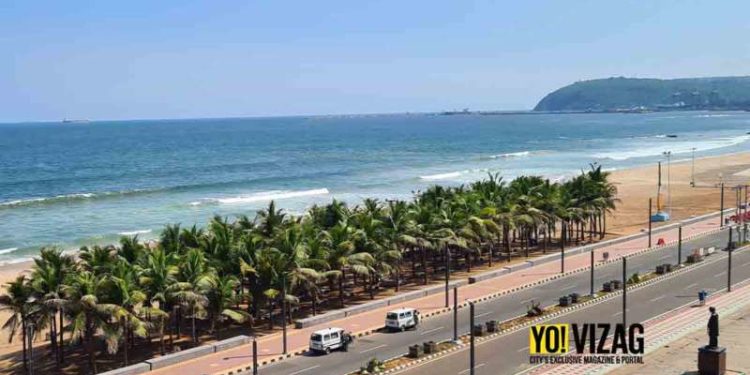A research team from University of Hyderabad (UoH), in association with the National Institute of Oceanography (NIO) and Oil & Natural Gas Corporation Limited (ONGC), has detected a geological fault line to the east of north Andhra Pradesh with maximum activity centred in offshore Vizag. According to their study, the currently dormant fault line may possibly become active again in the future. This activity might trigger the occurrence of a major coastal hazardous event associated with seismicity and tsunami in and around the Vizag region.
The research team, comprising Professor K S Krishna and Dr M Ismaiel from UoH, Dr K Srinivas from NIO, and Dr D Saha from ONGC, analysed seismic reflection data of the Bay of Bengal. Through their study, the researchers were able to comprehend the cause-effect relationship between the sediment load and the response of the heterogeneous igneous rocks underneath the sea.
The team found the presence of a 300-km-long fault line in the offshore region of north Andhra Pradesh, about 100 km away from the coastline. This fault line borders the eastern side of the offshore Bastar craton between the Pranahita-Godavari graben in the south and Nagavali-Vamshadhara shear zone in the north.
The study further revealed that the fault line activity in offshore Krishna-Godavari Basin was variable in nature. It had an episodic start about 16 million years ago and resumed again around 6.8 million years ago. From then, the activity continued until 0.3 million years ago. Excessive vertical throws occurred at the ages of 16 and 6.8 million years ago over a distance of 300 km in offshore north Andhra Pradesh, possibly triggering the seismicity and the generation of intensive tsunami events, the researchers said.
However, the fault line is currently inactive. In case of application of differential stresses on either side of the fault line, the activity might reach the threshold level, thereby thereby triggering earthquakes or tsunami in the vicinity of Vizag in the future. This study was brought to light in a recent issue of Journal of Earth System Science, published by the Indian Academy of Science.










Discussion about this post